Categories:
General Market Commentary
/
Precious Metals
Topics:
General Market Commentary
/
General Precious Metals
Generation Mining – Fast-tracking Marathon towards feasibility study
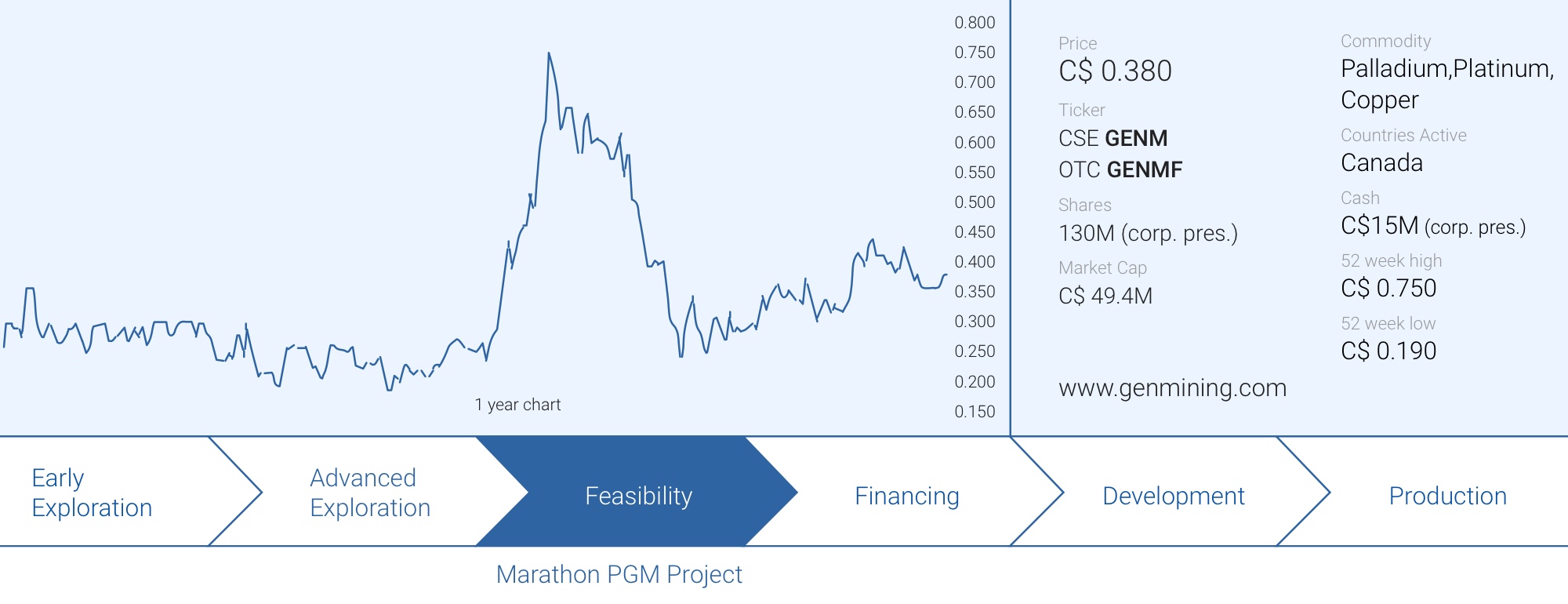
Less than six months ago, companies were stumbling over each other to acquire and drill PGM projects as the Palladium-price soared to in excess of $2000/oz. Pretty much every company which previously encountered some palladium dust in its samples was re-branded as a palladium story as that made it easier to secure funding. Some of those companies will succeed, others will fail.
Generation Mining (GENM.C) was an early mover as it secured the majority ownership of the Marathon PGM deposit in Ontario about a year ago. Given the current palladium price and how the deposit is shaping up with a recently completed PEA as crown jewel, this acquisition may enter the history books as one of CEO Levy’s best deals ever. Unfortunately, Generation Mining has also been sold off along with the other palladium companies although the base case scenario of its PEA uses a palladium price that’s substantially lower than what the metal is trading at now.
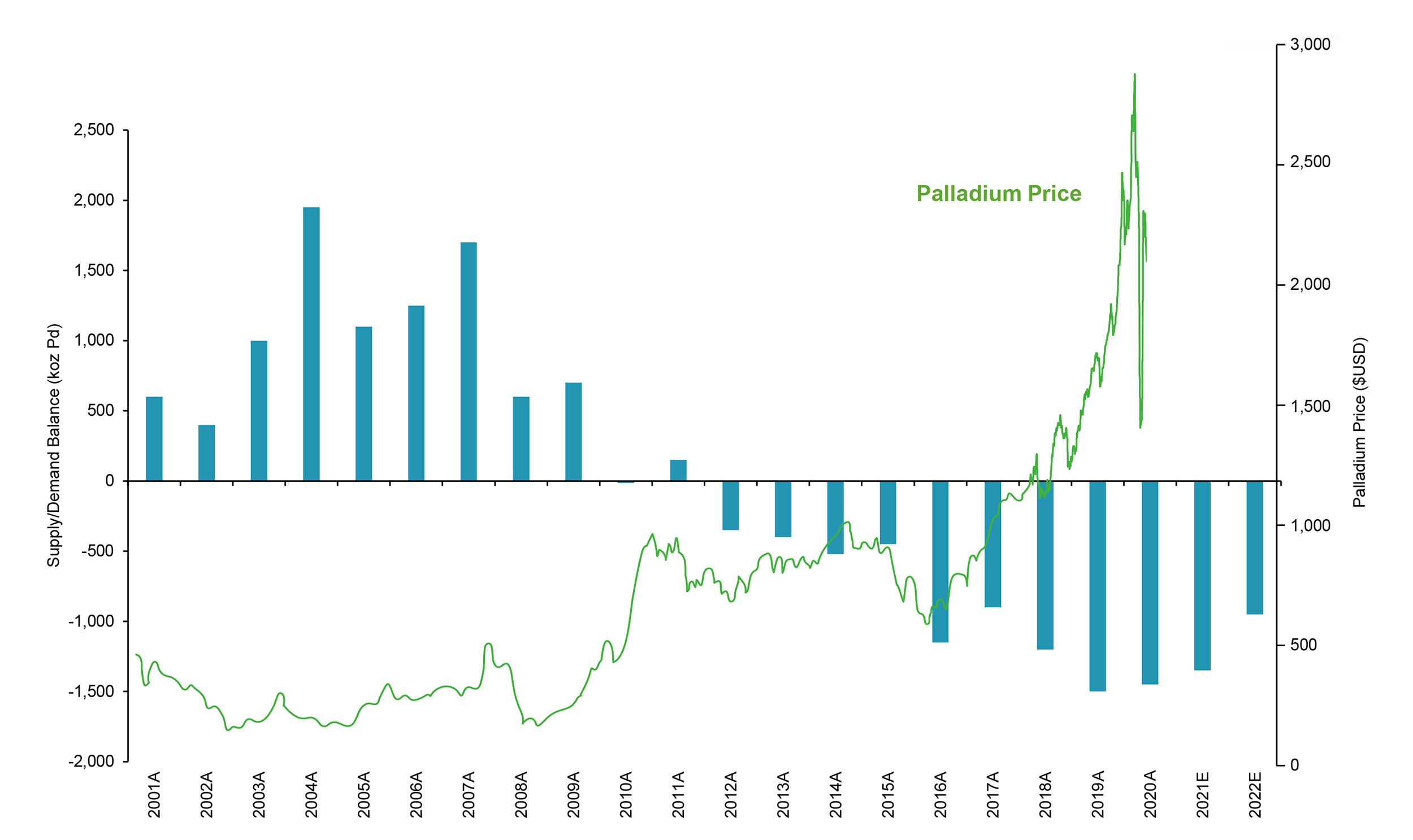
Palladium Market Price, Supply and Demand Balance Historic and Forecast
At the current Palladium price, Marathon remains hugely profitable
The January 2020 PEA intended to figure out the economics of the Marathon PGM project using reasonable commodity prices. A successful exercise as the base case scenario using $1275 palladium confirmed the economics of Marathon as the after-tax IRR came in at 30% while the NPV5% of C$871M (again on an after-tax basis) shows how important the low-cost nature of the operations will be: the all-in sustaining cost per ounce of palladium-equivalent is estimated to be less than US$600, or less than a third of the current palladium price and less than half the base case price used in the PEA.
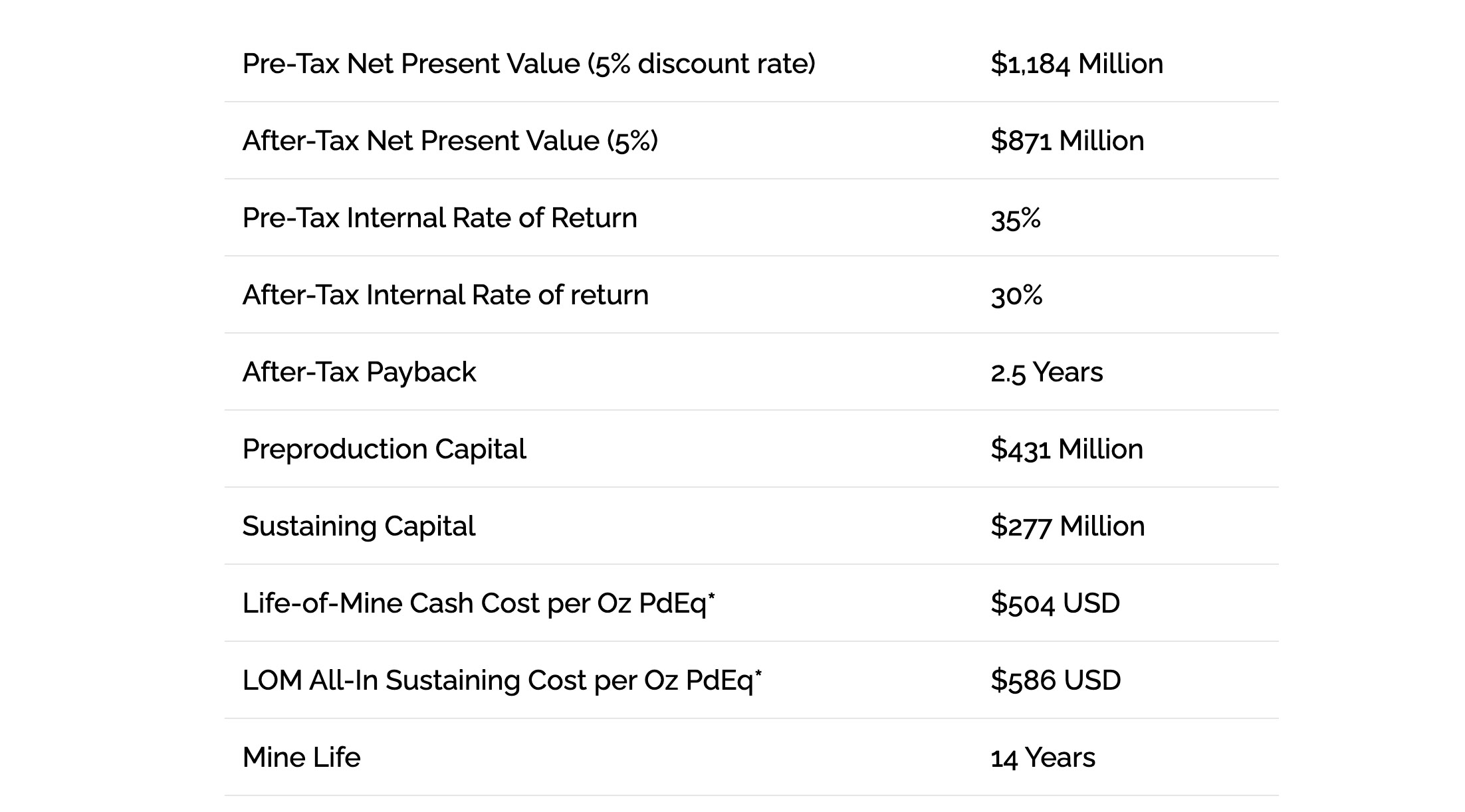
And just to make the comparison easier and to explain the impact the current metal prices have on the economics, the following table compares the metal prices used in the Preliminary Economic Assessment with the metal prices halfway June.
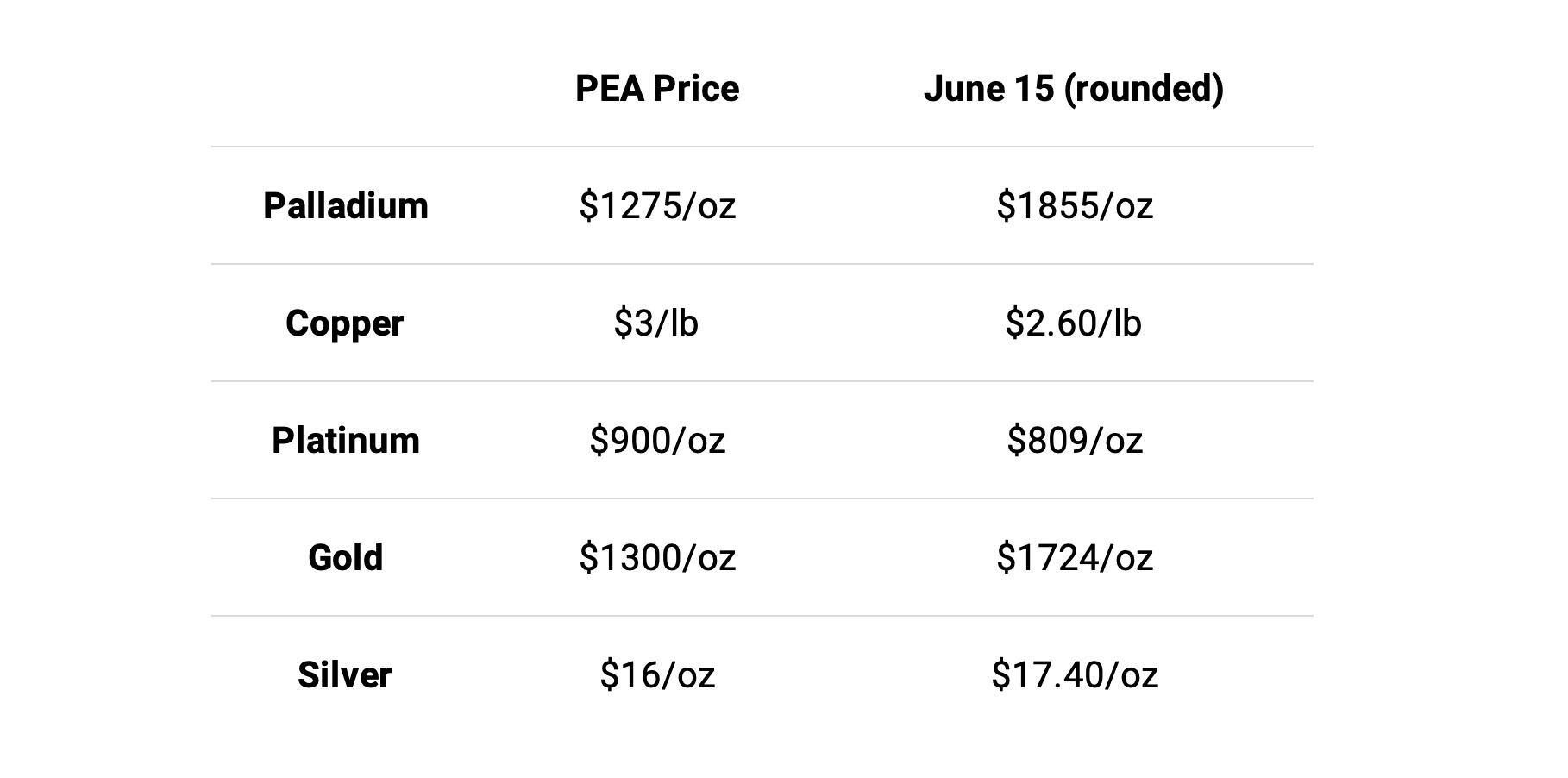
Platinum and Copper are trading about 10% lower than the price used in the PEA, but these are just by-products and the slightly lower price will have very little impact in the greater scheme of things. But to show how important the higher palladium price is, we have put a table together to show the impact of the difference in metal prices on the product mix. Important side-note: we obviously look at the payable metal output and not the total resource nor the amount of metals produced (as the payability ratio is less than 100%).
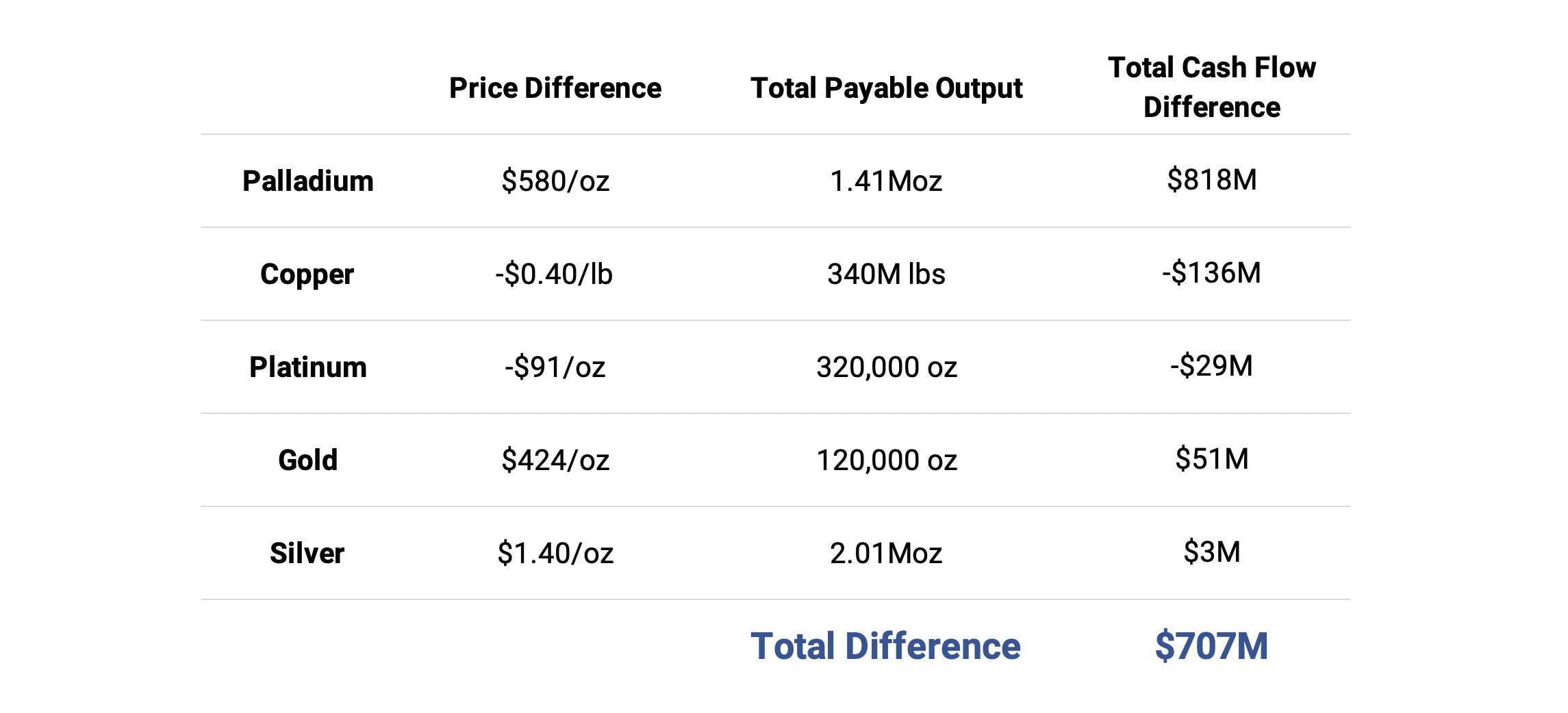
So applying the current metal prices would boost the cash flow of the project by US$707M, or almost C$1B. Keep in mind this is just a rough back of the envelope calculation. Additionally, the cash flow difference was calculated on a pre-tax and undiscounted basis. Adding in taxes and a 5% discount rate will likely reduce the impact on the NPV by more than 50% compared to the US$707M quoted above.
As palladium is by far the most important metal in the production mix, Generation’s sensitivity table also provides interesting details.

Palladium Price Sensitivity
Keeping all commodity prices but the palladium price unchanged shows an after-tax NPV5% of C$1.33B based on a palladium price of $1700/oz, about 10% below the current price.
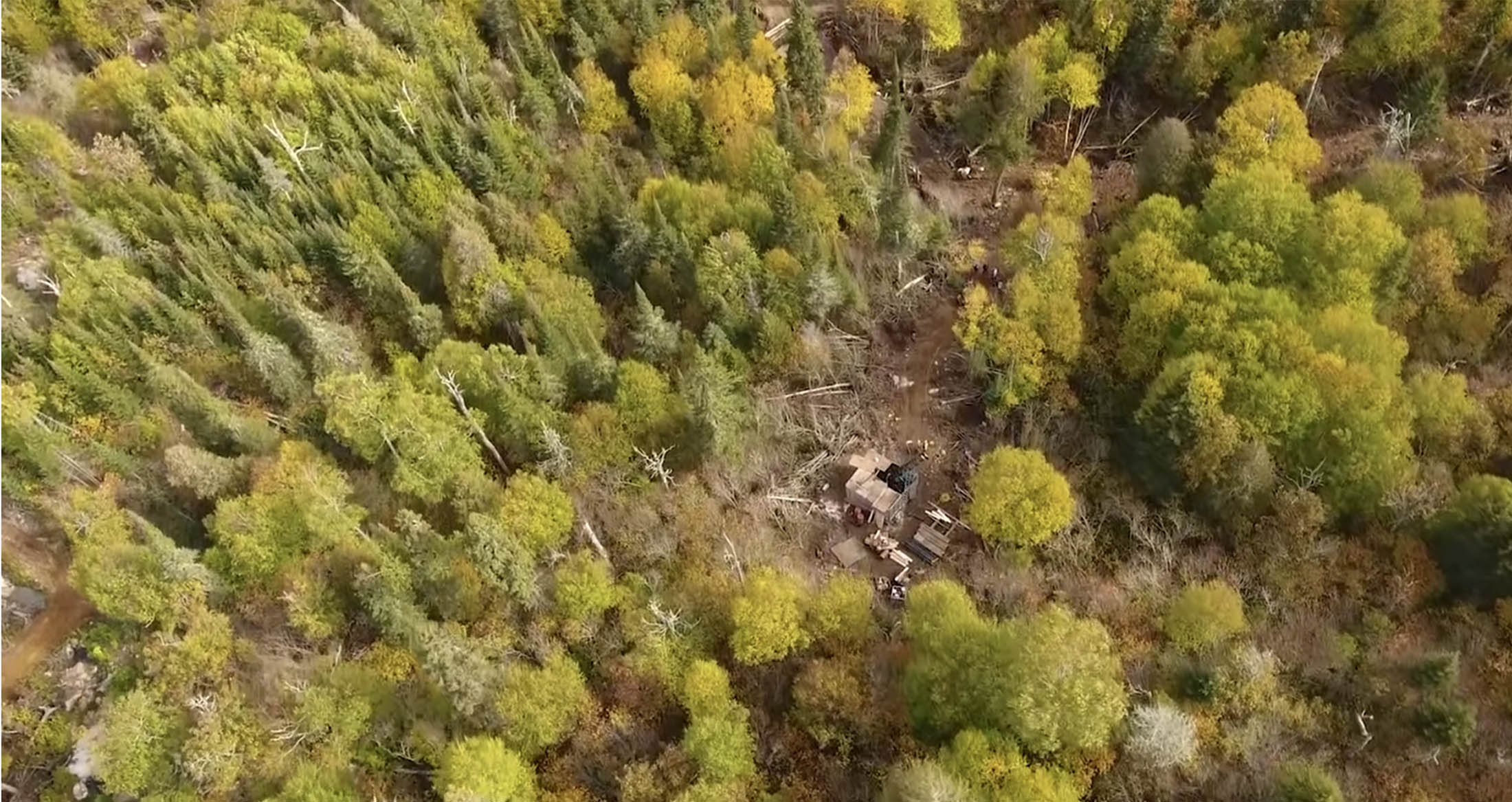
Sibanye’s claw-back right explained
There still appears to be some confusion as to how the Sibanye-Stillwater (SBSW) earn-back agreement works. Generation Mining remains on track to obtain its 80% stake in the project by the end of this year, and Sibanye has a one-time right to repurchase a 31% stake where after a 51/49 joint venture will be formed where Generation Mining becomes a minority partner. This one-time-right remains open for a period of 90 days starting on the day a production decision will be made (likely in H1 2021 upon the completion of a feasibility study).
To earn back the 31%, Sibanye will have to cover 31% of the capex whereafter it will obviously still have to contribute its 51% stake in the remaining capex. The capex in the PEA was estimated at C$431M, and 31% of this is C$134M. This means Sibanye will have to cover the first C$134M AND 51% of the subsequent C$297M (C$151M).
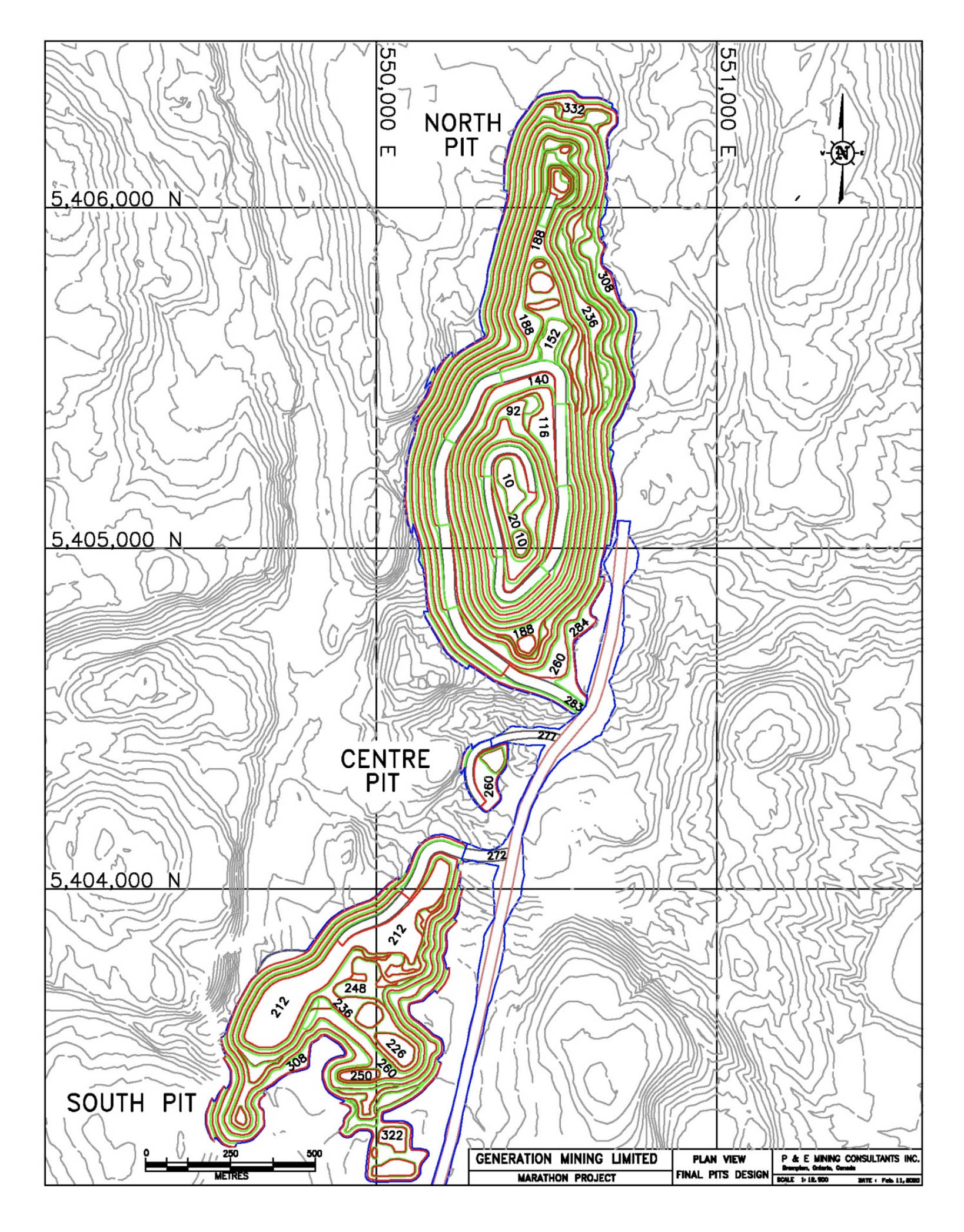
Marathon Final Pit Design
This means Generation Mining will only have to contribute C$146M of the C$431M capex (34% of the total capex) for 49% of the economic rights. This also allows us to re-calculate the attributable NAV in case Sibanye decides to execute the claw-back clause. In the base case with the C$871M NPV, the discounted sum of the cash flows is C$1.3B (you need to add the initial capex back the equation to figure out the total net cash flows). Generation Mining’s attributable share of the cash flows will be C$638M. However, Generation will only be required to fund C$146M of the capex which means the attributable NPV of the Marathon project will be C$492M for its 49% stake.
If we would look at the C$1.33B NPV in the $1700/oz palladium scenario, we can just add back the C$431M to end up at a total cash flow of C$1.76B of which C$862M is attributable to Generation Mining. Deducting the C$146M capex requirement results in an attributable NAV of C$716M to Generation Mining.
Of course, the aforementioned calculations only make sense if Sibanye effectively decides to increase its stake again to 51%. But it shows how strongly the agreement is in Generation’s favor.